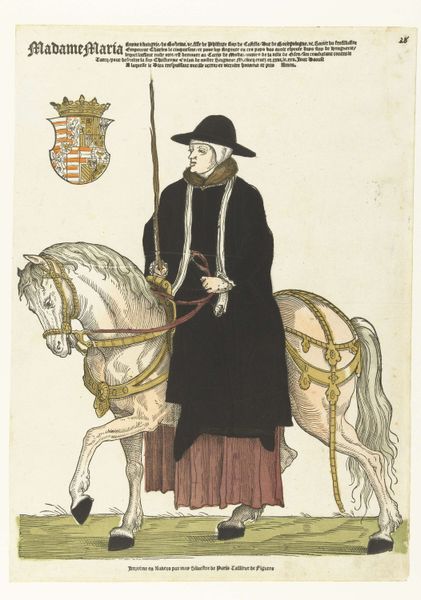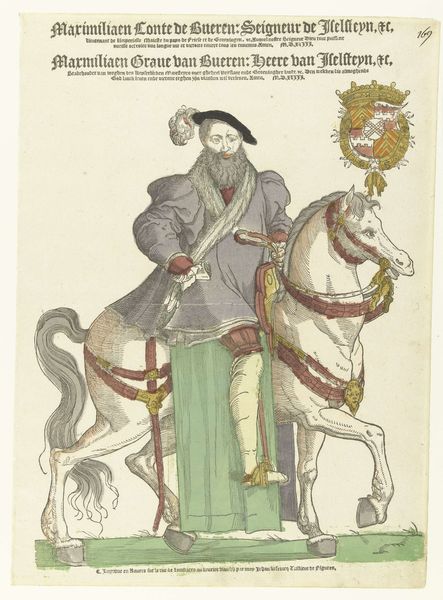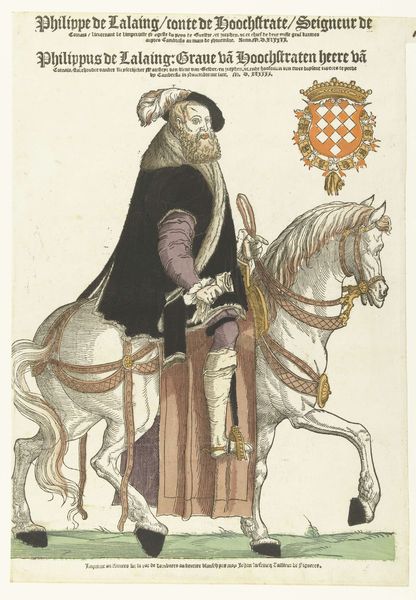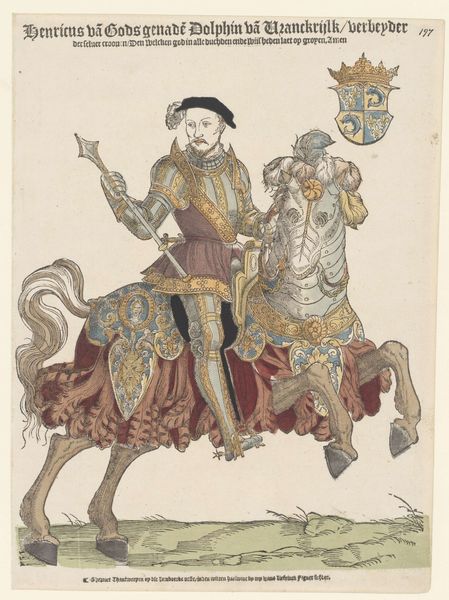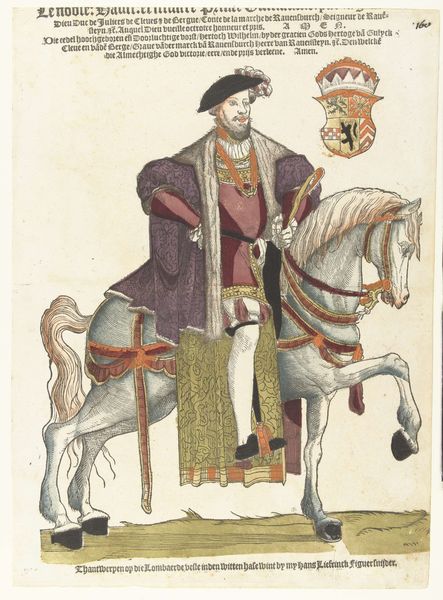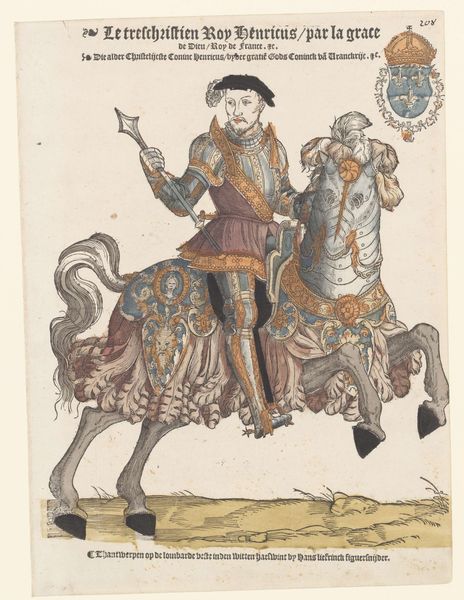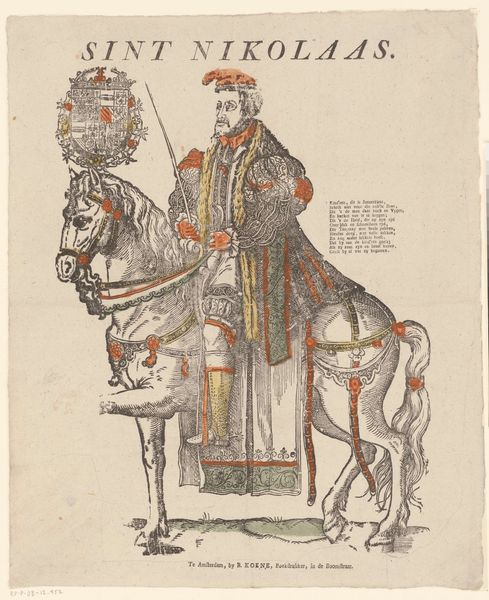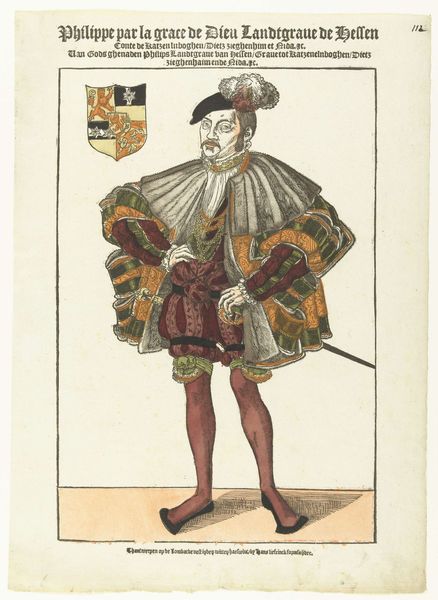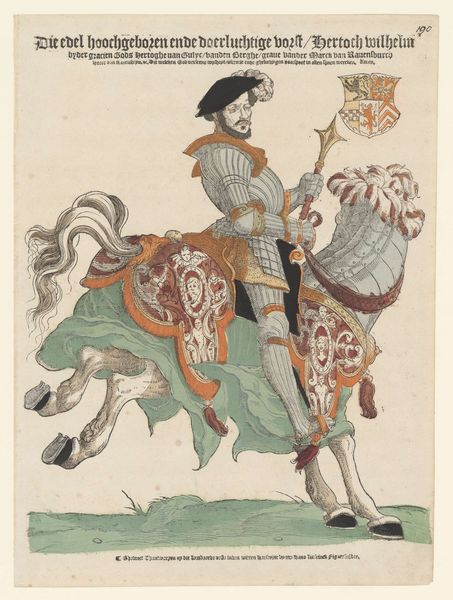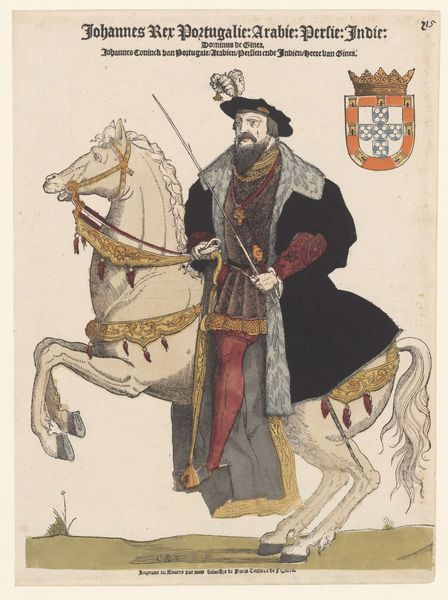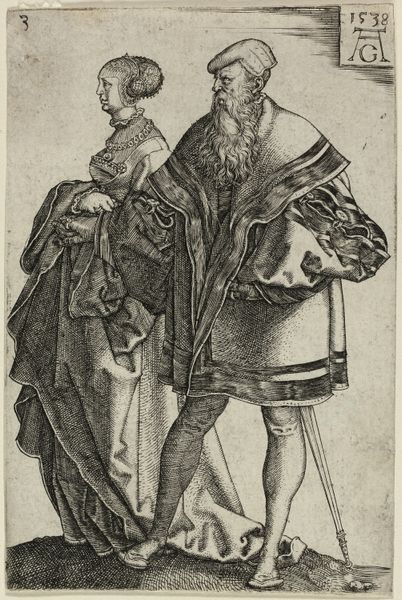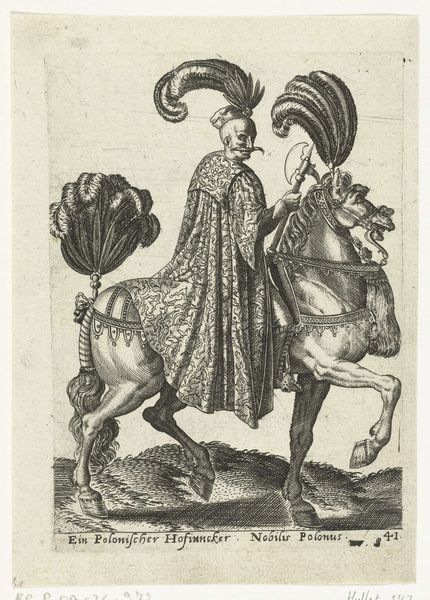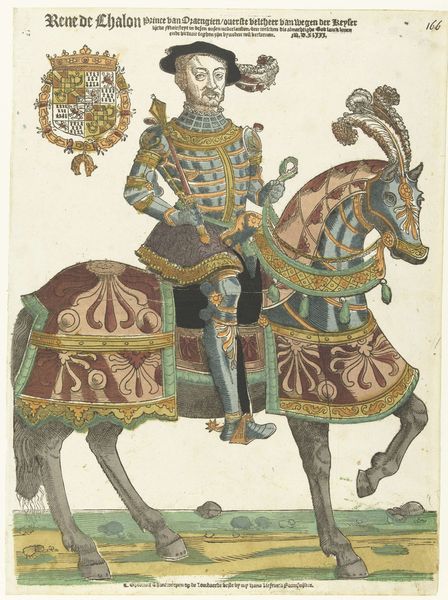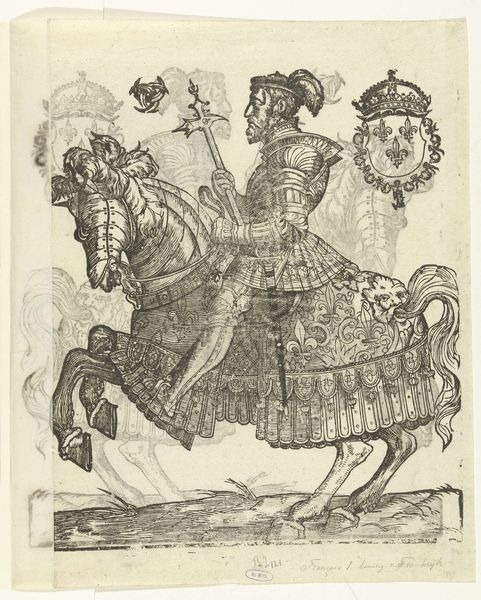
print, metal, paper, engraving
#
portrait
# print
#
metal
#
figuration
#
paper
#
11_renaissance
#
history-painting
#
engraving
Dimensions: height 406 mm, width 295 mm
Copyright: Rijks Museum: Open Domain
Editor: This is "Portret van Filips de Croy te paard" by Cornelis Anthonisz., made sometime between 1546 and 1549. It's an engraving on paper. I’m struck by the detail in the rendering of his clothing and the horse’s tack. What aspects of this portrait grab your attention? Curator: I'm drawn to the methods used to disseminate power. Anthonisz. created a reproducible image using engraving—a process heavily reliant on skilled labor and specific materials: metal plates, paper, inks. Think about the social context: this image was intended for circulation. Editor: So, you’re saying the *how* is as important as the *who*? Curator: Precisely. It challenges the notion of a unique masterpiece. Look at the labor involved—the artisan who crafted the metal plate, the printers who produced multiple copies. Where does “high art” begin and craft end? What was the consumption like of the original run? Editor: It’s interesting to consider the process like that. The engraving seems almost mass-produced, despite the intricacy. The work's inherent value is linked to who owns the final piece. Curator: And how it was traded, displayed, and ultimately, used to reinforce De Croy's status. The portrait becomes a commodity. How does understanding its material existence affect our perception of its subject, Philippe de Croy? Editor: It’s fascinating how the technical process and circulation of the image contributed to De Croy's overall persona, blurring the line between art, craft, and marketing, really. I hadn't considered how accessible he may have wanted this image to be. Curator: Absolutely! It shows us how art and materiality are interconnected with historical narratives of wealth and social class in the Renaissance. I see value and power, as they were bought and sold at the time, as still influencing how we consume this today.
Comments
No comments
Be the first to comment and join the conversation on the ultimate creative platform.
